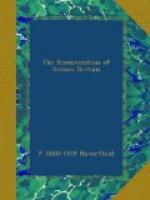[Footnote 1: The fortress was situated on the left or east bank of the Ouse close to the present cathedral, which stands wholly within its area. Parts of the Roman walls can still be traced, especially at the so-called Multangular Tower. The municipality lay on the other (west) bank of the Ouse, near the railway station, where various mosaics indicate dwelling-houses. Its outline and plan are, however, not known. Even its situation has not been generally recognized.]
[Footnote 2: If the evidence of milestones may be pressed, the ‘territory’ of Eburacum extended southwards at least twenty miles to Castleford, and that of Lincoln at least fourteen miles to Littleborough (Ephemeris Epigraphica, vii. 1105=ix. 1253, where the last two lines are AVGG EB|MP XX (or XXII), and vii. 1097). The general size of these municipal ‘territoria’ is amply proved by Continental inscriptions.]
Of the rest, some part may have been included in the Imperial Domains, which covered wide tracts in every province and were administered for local purposes by special procurators of the Emperor. The lead-mining districts—Mendip in Somerset, the neighbourhood of Matlock in Derbyshire, the Shelve Hills west of Wroxeter, the Halkyn region in Flintshire, the moors of south-west Yorkshire—must have belonged to these Domains, and for the most part are actually attested by inscriptions on lead-pigs as Imperial property. Of other domain lands we meet one early instance at Silchester in the reign of Nero[1]—perhaps the confiscated estates of some British prince or noble—and though we have no further direct evidence, the analogy of other provinces suggests that the area increased as the years went by. Yet it is likely that in Britain, as indeed in Gaul,[2] the domain lands were comparatively small in amount. Like the municipalities, they account only for a part of the province.




